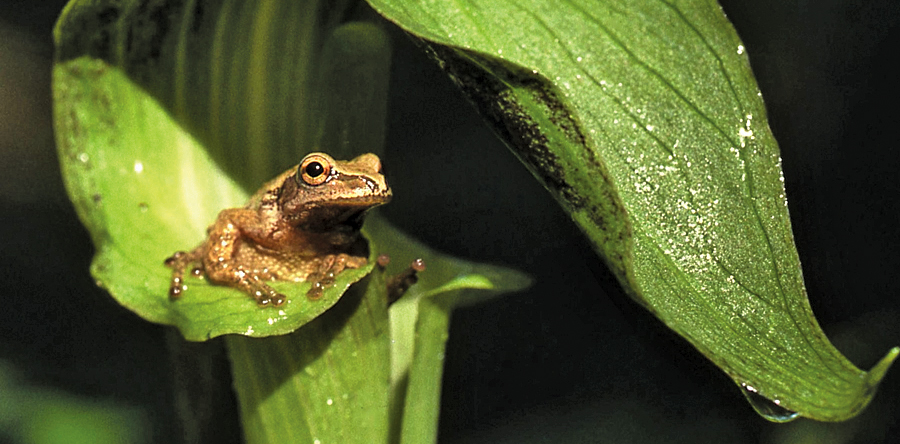by Lowell Washburn
For many Iowans, late season snowfalls and frigid winds make it seem as if winter will never end. But in reality, the impending change of season could be just around the corner. Temperatures will eventually rise and ponds and marshes will become ice free. When that happens, the Iowa landscape will suddenly erupt in spring song. Northbound geese, killdeer, and red-winged blackbirds will be among the first to proclaim spring’s arrival. But not all spring songsters will have wings and feathers. And although they may be less obvious and are certainly more difficult to spot, each of Iowa’s 16 species of frogs and toads will add their own unique melodies to the annual symphony.
Iowa amphibians – our frogs, toads, and salamanders — are interesting, diverse, and highly beneficial forms of wildlife. All species lead amazing, double lives. Shortly after emerging from hibernation, males gather at spring wetlands where they begin calling to attract mates. In the case of early season chorus frogs and spring peepers, the sounds emanating from communal gathering spots can become downright deafening. As the season progresses, the open-air opera is joined by other voices, including the unique trilling of American toads. As far as the toad is concerned, singing is meant to be a group activity. One crooner quickly inspires another, and then another and another. The voice of each toad has a slightly different pitch, and the night air soon blossoms with a level of harmonic perfection that is enough to make the best barber shop quartet turn green with envy.
The sounds are hard to ignore, and the females soon arrive. Eggs are laid in water where they quickly hatch into wriggling tadpoles. During the warm weather growing season, the tadpole’s tail shrinks away as legs appear and grow. Once metamorphosis is complete, the now tailless air breathing adults leave the water to begin life on land.
Unfortunately, amphibians are listed among the planet’s most vulnerable forms of wildlife. Beginning life in the water, eggs and young are extremely susceptible to chemical runoff and other forms of pollution. As adults, amphibians may continue to absorb toxins through their highly sensitive skins. Some species have endured large scale die offs from infectious disease. Like all wildlife, amphibian populations have suffered worldwide from the negative impact of large-scale destruction of native habitats.
During recent decades, global amphibian populations have shown a dramatic and





